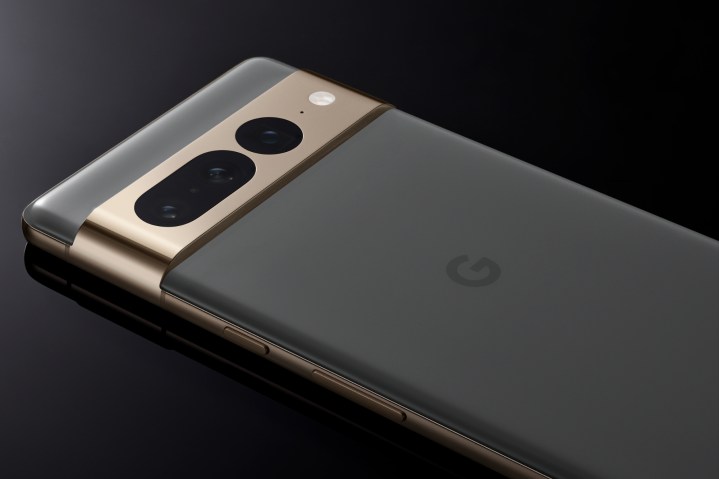Google today announced the Pixel 7 and Pixel 7 Pro, its flagship phones for 2022, at its #MadeByGoogle October event. Both of these devices will replace the now discontinued Pixel 6 and Pixel 6 Pro, slotting in at precisely the same price points of $600 and $900, while the Pixel 6a will bring up the rear as the cheaper Pixels.
As with all smartphones released this year, it’s an iterative update. There’s a lot of stuff, sure, but none of it is strictly new. The camera visor, for one. Yes, it’s the same, but it’s now covered by a metal banding to protect the glass underneath. It’s a neat look that works with the colors — Obsidian, Snow, and Lemongrass (Hazel for the Pro) — to provide the Pixel’s classic dual-tone color scheme. The displays remain good and get even brighter, stopping out at 1,500 nits. If that means nothing to you, let’s just say it should almost as bright as the very good iPhone 14 Pro Max.
The same goes for the cameras. It’s a pair of new Google Pixels, so the cameras are always worth talking about. All smartphone cameras are good, with the differences being mediated by software. Google has worked on a specific, contrasty look for its Pixels (one that’s also better attuned to accurately represent people of color). If you like the look, you can expect more of that. If you don’t, you can expect more of it nonetheless. The camera sensors remain the same: a 50-megapixel main shooter for the pair, joined by a 12MP ultra-wide camera, with a 48MP telephoto lens for the Pro. All the old hits return, including Magic Eraser, Real Tone, Face Unblur, Night Sight, and so on. Google’s bringing in some new ones, including Macro Focus and Cinematic Blur. Sure the iPhone had these first, but Google had a 48MP camera first, so it’s all swings and roundabouts.
There’s also some new-but-not-so-new stuff to the front camera. Now there’s an 11MP selfie camera for both phones and you’re able to capture ultra-wide selfies with this. It’s something that came with the Pixel 3 XL and its bathtub notch. Thankfully, the notch is being left behind. Another feature that’s returning is Face Unlock. This is new if you’re coming from the Pixel 5 or 6, but it was on the Pixel 4. It’s more a returning guest star on Disney Channel hoping for your applause than a bright new entrant with a lot of potential, though. Like that returning guest, its star has dulled somewhat. It’s not a replacement for the fingerprint sensor, and it won’t match Face ID on an iPhone. It’s just to unlock your phone — that’s it. If you use biometrics for anything more complicated, like verifying bank transfers or locking your WhatsApp chats away, pull out that trusty thumb once more. Google was said to be bringing this to the Pixel 6 Pro but was unable to overcome power consumption concerns. The fact that it’s debuting on the Pixel 7 Pro should also serve as reassurance on that front.

Other than that, a lot of what is here should remind you of the Pixel 6. The centered hole punch is here without a Dynamic Island, the always-on-display remains without substantial changes. There’s glass on the rear (Gorilla Glass Victus) and metal on the sides. You can grab both of these phones with up to 256GB of internal storage (the Pro goes up to 512GB, though) paired with 8 or 12GB of RAM (depending on which phone you get). Google’s Tensor chip is returning again with efficiency improvements and all of Google’s AI smarts. This means you’ll get the best out of Google’s Pixel software on it, and it’ll last long with three years of software updates and five years of security updates. There’s fast charging if you use a compatible 30W charger with the 4,300mAh and 5,000mAh batteries offering up to 72 hours of battery life (with Extreme Battery Saver Mode), and so on. It’s a Pixel, you know what you’re getting.
Google’s Pixel 7 is not an overhauled version of the Pixel 6 as the 6 was to the 5. Much like Android 13 was to Android 12, it’s a refinement of what has come before. If you have a Pixel 5 or earlier, this would be a mighty huge leap for you, especially hardware-wise. If you have a Pixel 6 and were dealing with some little niggles here and there, the Pixel 7 could fix those for you. You don’t have to, of course. Google’s Pixel 6 will be supported for up to five years — that’s another Pixel thing.
Editors’ Recommendations




